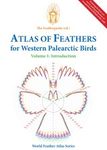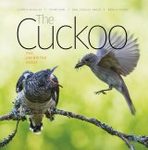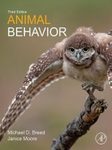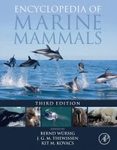Monograph
By: Ian Newton(Author), Keith Brockie(Illustrator)
597 pages, 130 b/w illus, figs, tabs
![Population Limitation in Birds Population Limitation in Birds]()
Click to have a closer look
About this book
Contents
Customer reviews
Biography
Related titles
About this book
An understanding of the processes of population limitation is central to the study of ecology, whether in birds or in other organisms. It also provides the basis for the practical management of wild populations, whether for conservation or for sustained human exploitation. Population Limitation in Birds, which expands on Lack's research in the 1950s, provides a coherent synthesis of findings on bird populations from various parts of the world. The 16 chapters fall under three major section headings: behaviour and density regulation; natural limiting factors; and human impacts.
Contents
Preview.
Behaviour and Density Regulation:
Social Systems and Status.
Habitat and Density Regulation.
Territorial Behaviour and Density Limitation.
Density Dependence in Bird Populations.
Habitat Fragments and Metapopulations.
Natural Limiting Factors:
Food-Supply.
Nest-Sites.
Predation.
Parasites and Pathogens.
Weather.
Inter-Specific Competition.
Interactions Between Different Limiting Factors.
Human Impacts:
Hunting and Pest Control.
Pesticides and Pollutants.
Extinction.
Bibliography.
Index.
Customer Reviews
Biography
Dr. Ian Newton is respected world-wide both as a biologist with a special interest and expertise in this subject and as a communicator. He is a seasoned and popular key note speaker at National and International meetings, and his talks are often the high point of conferences.
Ian Newton was born and raised in north Derbyshire. He attended Chesterfield Boys Grammar School, followed by the universities of Bristol and Oxford. He has been interested in birds since boyhood, and as a teenager developed a particular fascination with finches, which later led to doctoral and post-doctoral studies on these birds. Later in life he became known fore his penetrating field studies of bird populations, notably on raptors. He is now a senior ecologist with the Natural Environment Research Council, and visiting professor of ornithology at the University of Oxford. Most of his research has been in Scotland, but he has also spent a sabbatical year with the Canadian Wildlife Service, studying waterfowl, and is a frequent visitor to research groups in the United States and elsewhere. He has published more than 200 scientific papers on birds, and several books, including Finches (1972), Population Ecology of Raptors (1979), The Sparrowhawk (1986), and Lifetime Reproduction in Birds (edited, 1989). He has served as President of the British Ecological Society, Vice-president of the British Ornithologists' Union, and is honorary member of the American Ornithologists' Union. He has received several prestigious awards for research and conservation, and was elected Fellow of the Royal Society in 1993. He is married, and has two sons and a daughter.
Monograph
By: Ian Newton(Author), Keith Brockie(Illustrator)
597 pages, 130 b/w illus, figs, tabs
"This is the most important book on bird population ecology for many years. It is not just of academic interest but should be read by anyone who is responsible for managing bird populations or for laying down policy as to how they should be managed."
- Jeremy J.D. Greenwood in Habitat (October 1999)
"This book will be of tremendous interest and value to students, their lecturers, and field ornithologists, both amateur and professional, as a major source of information on bird populations, intelligently catalogued and clearly interpreted by one of the world's foremost ornithologists."
- Mark Holling in Scottish Birds (September 1999)
"[Ian Newton] has done it again! Ian Newton's latest book is organized logically and sequentially, packed with information, and written 'in simple language in the hope that it will be of value not only for the professional ecologist, but for anyone with an interest in birds.' It is encyclopedic, an open sesame to the world's bird population literature. A tour de force. Every college library should have one or more copies. I recommend it without reservation."
- C. Stuart Houston in The Canadian Field Naturalist (September 1999)
"[...] provides a fresh and informed synthesis of a mass of scattered information from around the world, presenting it in a clear and coherent manner. It should be of value not only to be the research worker and student, but also to those concerned with the practical management of bird populations (whether for hunting, crop production or conservation), as well as to those interested in bird-watching as a hobby."
- Charles E. Keller in Indiana Audubon Quarterly (August 1999)
"An impressive feature of this book is its organization and readability. The user-friendly style, however, does not result from diluted content. The text provides a rich array of detail and nuance that could only come from a lifetime of experience with detailed field studies."
- Jeffrey F. Kelley in Auk (July 1999)
"In an age of edited volumes fraught with uneven coverage of complex topics, it is refreshing to have one author with sufficient breadth and confidence to cover the scope of topic, especially one as broad as avian population ecology."
- J. Burger in Choice (June 1999)
" [...] this book is of a supreme high standard, as one would expect from this author. Ian Newton is well-known for his work on the Sparrowhawk, and before that on finches, especially the Bullfinch."
- Avicultural Magazine (1998)
"An abundance of examples worldwide illustrates the points and every page has something fascinating. It is clearly written and easily understood. If you are interested in the facts about bird numbers and what controls them, this is certainly for you."
- Bird Box
"The content of the book sticks very firmly to its title, with an impressive array of examples and comments: 1865 references and 734 bird species are cited. [...] this highly readable book constitutes a very comprehensive and practical account of our knowledge on bird populations, with an incredible quantity of examples and illustrations."
- Ibis

































